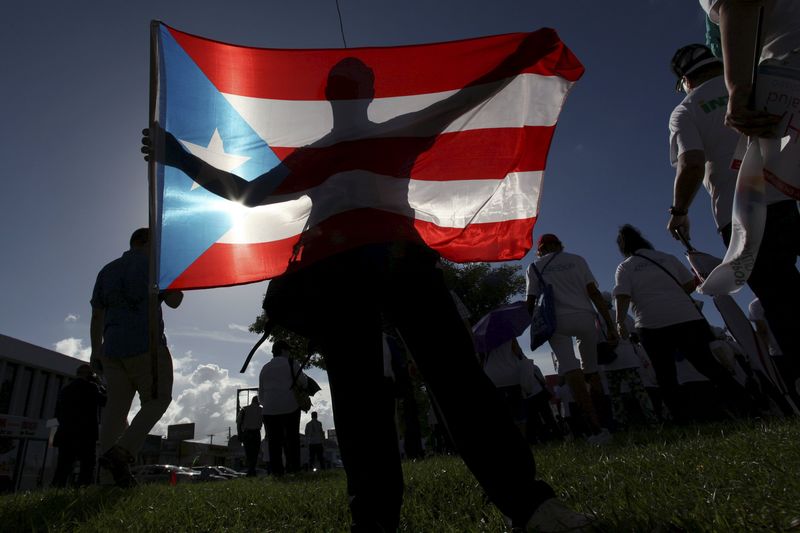(Bloomberg) -- Puerto Rico bonds rallied, pushing the U.S. territory’s most-frequently traded security up by more than 20 percent, after it released a revised financial turnaround plan that projects budget surpluses over the next six years because of an influx of funds to help it rebuild from Hurricane Maria.
The price of its general-obligation bonds due in 2035 rose by 7 cents on the dollar to an average of 43.6 cents Monday, the highest since early October, after climbing as high as 45 cents, according to data compiled by Bloomberg. The prices of the territory’s sales-tax, electric company and building authority bonds also jumped in heavy volume.
The government’s latest projections mark the second time in as many months that it’s offered a more sanguine outlook for its recovery, bolstering speculation among investors that they stand to recover more in the island’s record-setting bankruptcy than previously anticipated. The plan projects that Puerto Rico will have a surplus, excluding bond payments, of $6 billion over the next six years after implementing plans to steady its finances, up from the $3.4 billion projected last month.
"The move is bigger than expected, but it is in reaction to the fiscal plan which has come out more positively than previous ones," said Daniel Solender, head of municipal investments at Lord Abbett & Co., which holds $20 billion of state and local debt, including Puerto Rico securities. "There still is a long way to go, but there is growing optimism that things have moved better than worst case scenarios."
Puerto Rico general-obligation bonds were the most actively traded municipal securities Monday, with some $173 million changing hands by early afternoon. The rally wiped out much of the losses that Puerto Rico bondholders suffered in the wake of the September hurricane. The bonds due in 2035 were trading at around 58 cents before the storm and tumbled to as little as 21 cents in December.
Insurers of Puerto Rico debt including Assured Guaranty Ltd., Ambac Financial Group Inc. and MBIA Inc. also rallied.
Governor Ricardo Rossello’s administration’s latest plan still needs approval from the federal board that’s been installed to oversee the turnaround and requires him to successfully implement steps to wrest savings from the government and increase revenue. The question of how much investors will recover on their bonds will also be determined in bankruptcy court, where creditors with sometimes competing claims are fighting over the the island’s cash.
The improved outlook in the latest road map reflects the flood of federal aid and insurance claims that are coming into the island as a result of the storm, which is promising to boost an economy that had been mired in a recession for years as residents left for jobs on the U.S. mainland. The economic stagnation culminated in Puerto Rico’s bankruptcy last year, when it turned to U.S. court for shelter from its creditors after defaulting on its debts.
As a result of the storm, Puerto Rico is counting on $21 billion of insurance money and about $49.1 billion of federal aid, enough to have a major impact on the pace of its growth. While the economy is projected to shrink by about 10.6 percent in the current fiscal year because of the hurricane and the outflow of residents, the government anticipates it will expand 7.3 percent next year and continue to grow for the following four years. A year ago, the island was projecting a continued economic contraction.
The latest plan was set to be considered by Puerto Rico’s federal oversight board Monday until the meeting was delayed. If approved, it will serve as a blueprint for the board, Governor Ricardo Rossello’s administration and creditors during negotiations over how much of the island’s $74 billion of debt it can repay.
(Updates bond prices, adds chart.)
